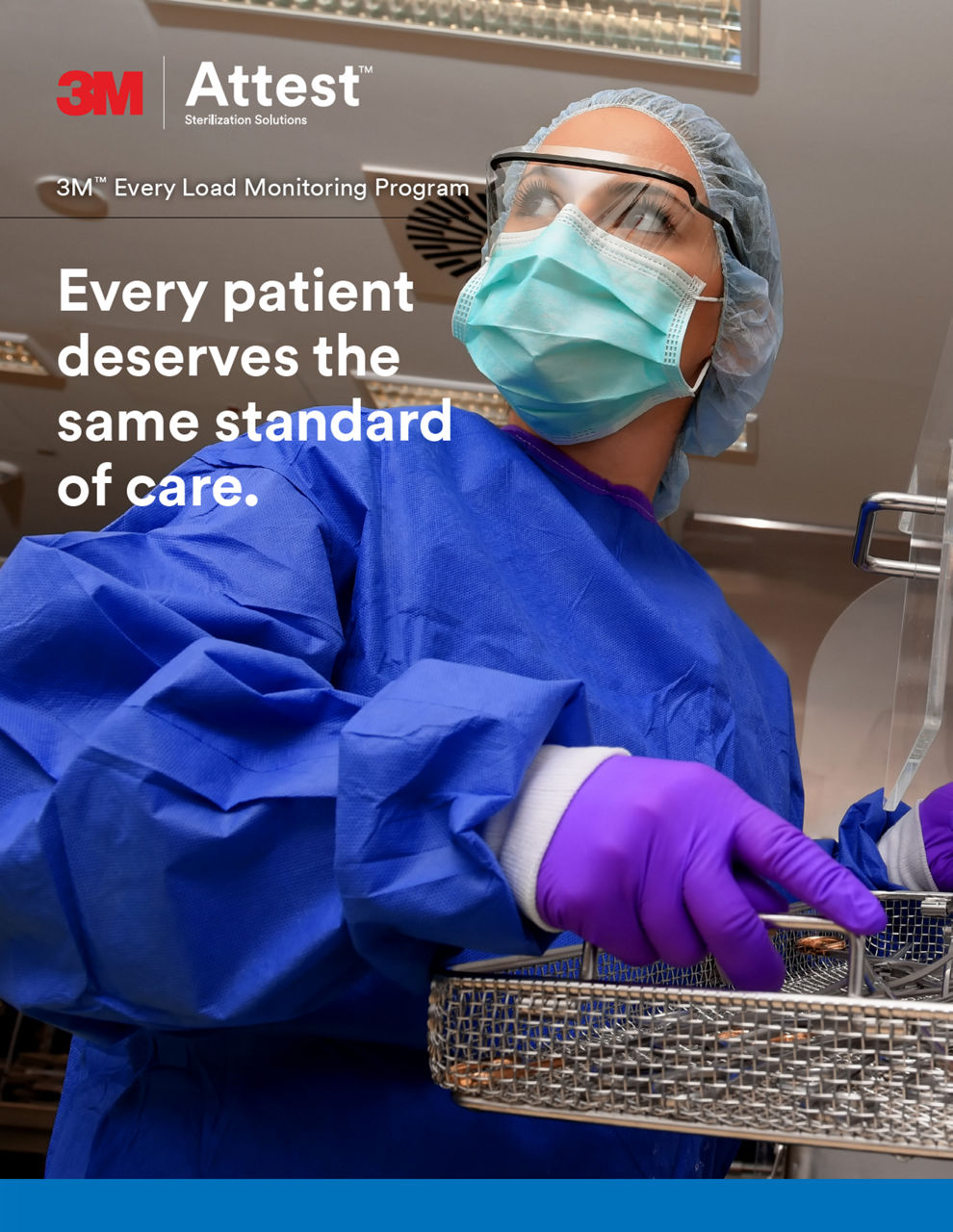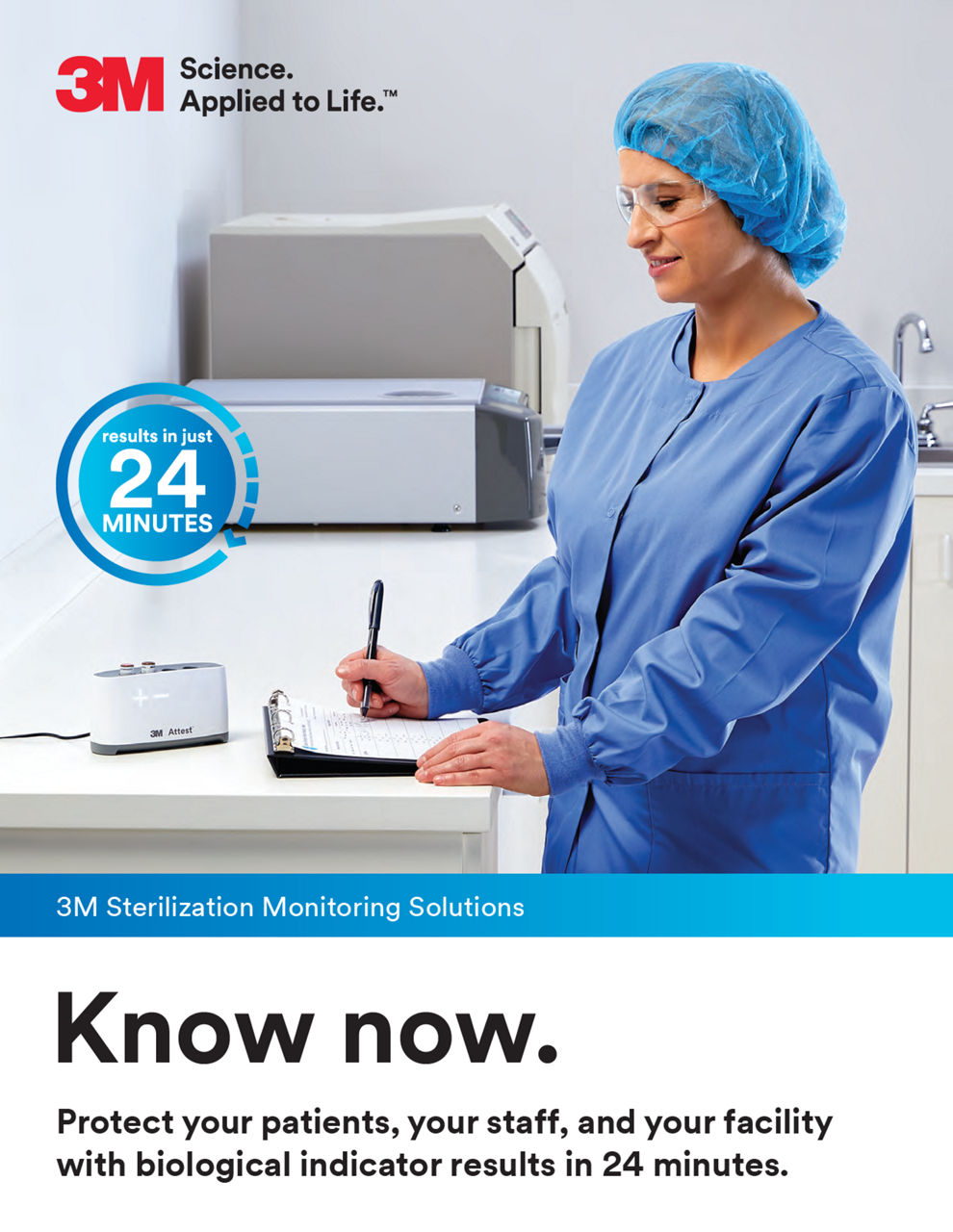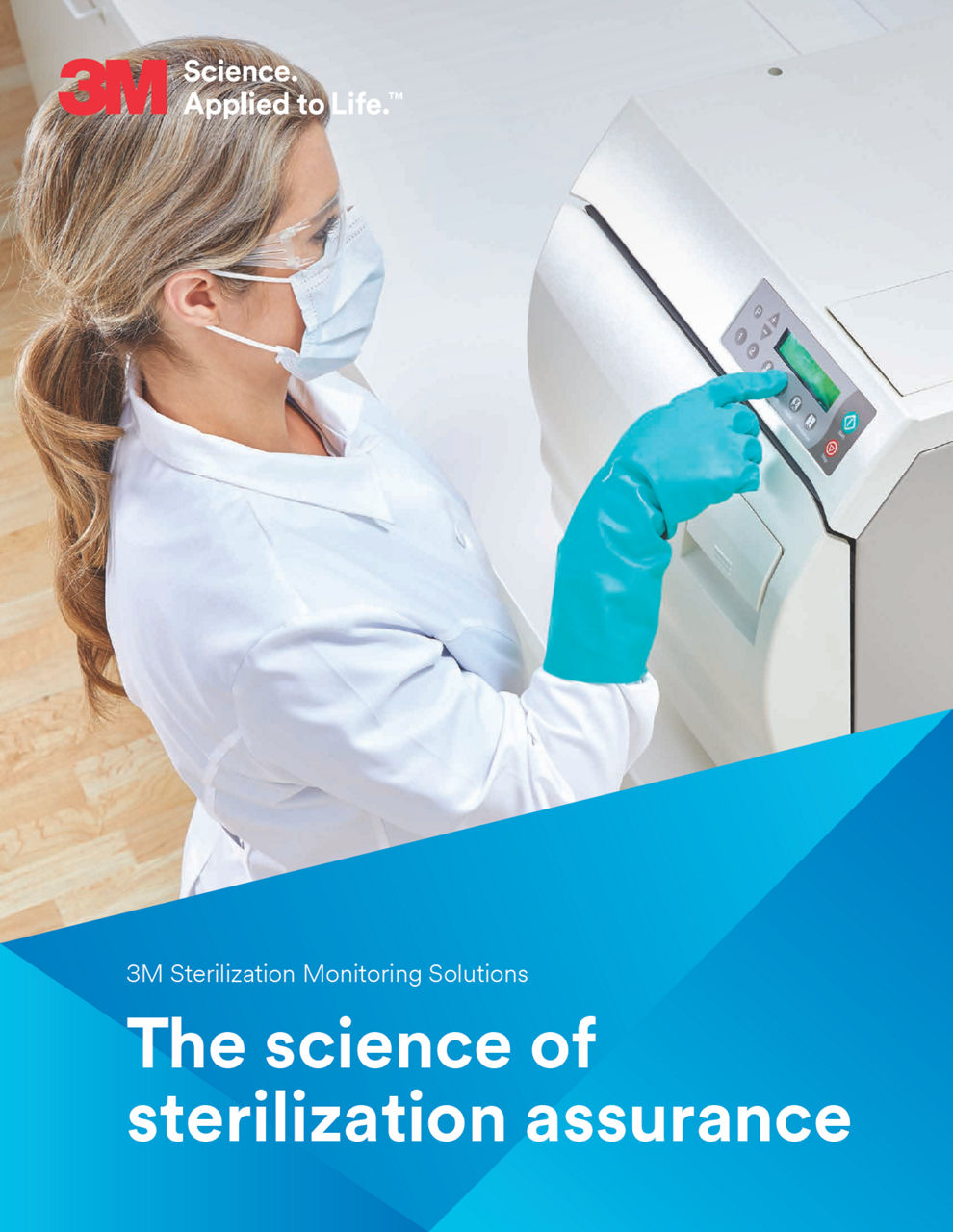Sterilization assurance
Simplify. Standardize. Streamline.
Maintaining the highest sterilization standards for your surgical instruments is critical to your mission of delivering a high standard of care. For over 30 years, we have delivered world-class, consistently reliable monitoring solutions to do just that. This trust has inspired us to continue creating solutions that help you tackle your daily challenges, improve workflows and reduce costs — all while you deliver sterile and safe instruments for every patient.

Greater challenges need innovative solutions. We can help you:
Discover our advanced sterilization monitoring products to help you protect your patients, your staff and your practice – and to put confidence in your hands.
Go digital with confidence: Introducing the 3M Attest eBowie-Dick Test System
Automated, digitized sterilization testing is here. Now you can save time, enhance your steam workflow, boost confidence, and get the reassurance that your sterile processing team is operating at its best. The same testing method you’ve always trusted is now digital.
Our 3M™ Attest™ eBowie-Dick Test System is:
- Definitive: Get pass/fail results without guesswork or subjective interpretation
- Efficient: Remove the burden of paperwork and eliminates manual recordkeeping
- Innovative: The FDA created a new category for it
We’re making it easier for you to simplify, standardize and streamline your sterilization process.

Go digital with confidence: Introducing the 3M™ Attest™ eBowie-Dick Test System
Automated, digitized sterilization testing is here. Now you can save time, enhance your steam workflow, boost confidence, and get the reassurance that your sterile processing team is operating at its best. The same testing method you’ve always trusted is now digital.
Our Attest eBowie-Dick Test System is:
- Definitive: Get pass/fail results without guesswork or subjective interpretation
- Efficient: Removes the burden of paperwork and can eliminate manual recordkeeping
- Innovative: The FDA created a new category for it
We’re making it easier for you to simplify, standardize, and streamline your sterilization process.


No assembly required
3M™ Attest™ Super Rapid Vaporized Hydrogen Peroxide Clear Challenge Pack
Save time and reduce potential error with the 3M™ Attest™ Super Rapid Vaporized Hydrogen Peroxide Clear Challenge Pack including both a BI and a CI. It’s the first and only preassembled VH2O2 test pack that can be used for routine monitoring and qualification across multiple sterilizer brands, models and cycle types.*
*as of November 11, 2024
Sterilization monitoring solutions
Find innovative solutions to enable your team to do more.

Ready to get started with our starter kit?
We can help you save with a starter kit. You can standardize practice across multiple facilities or your individual office — all with efficiency and training ease. Our simple, easy-to-use, portfolio of sterilization products is at your fingertips.
Educational resources for you
Explore more resources
References:
- Based on 3M-commissioned Gestalt survey of U.S. OR professionals, with CIs exposed to a steam sterilization cycle, shown to respondents in images of simulated-use conditions.
- Based on 3M-commissioned Gestalt survey of U.S. OR professionals, with CIs exposed to a steam sterilization cycle, shown to respondents in images of simulated-use conditions.
- Kirk B. Detecting vaporized hydrogen peroxide sterilization (VH202) process failures in clinical settings using chemical indicators. Zentr Steril. 2020;28(6):334–343.












